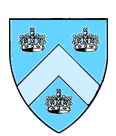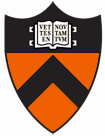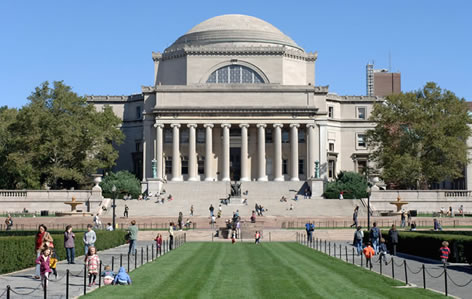|
Titles and Abstracts
- Martin Barlow
Quenched and averaged invariance principles for the
random conductance model.
M.T. Barlow, K. Burdzy, A. Timar.
The random conductance model considers a discrete or continuous time
random walk on Z^d where the edges e are given random weights mu_e.
While the case of i.i.d. mu_e is now essentially solved, many questions
remain for stationary ergodic environments. I will discuss the
difference between 'quenched' and 'annealed' (or, better, 'averaged')
invariance principles in this context.
- Thierry Bodineau
Tagged particle in a deterministic dynamics of hard spheres
We consider a tagged particle in a diluted gas of hard spheres.
Starting from the hamiltonian dynamics of particles in the
Boltzmann-Grad limit, we will show that the tagged particle follows a
Brownian motion after an appropriate rescaling. We use the linear
Boltzmann equation as an intermediate level of description for one
tagged particle in a gas close to global equilibrium.
- Subrho Ghosh
Rigidity phenomena in random point sets and applications
In several naturally occurring (infinite) point processes, we show that
the number (and other statistical properties) of the points inside a
finite domain are determined, almost surely, by the point configuration
outside the domain. This curious phenomenon we refer to as "rigidity".
We will discuss rigidity phenomena in point processes and their
applications. Depending on time, we will talk about applications to
stochastic geometry and to random instances of some classical questions
in Fourier analysis.
- Clement Hongler
Ising Model: making probabilistic sense of Conformal Field Theory ideas
We will consider the 2D Ising model at or near the critical point. The
scaling limit of this model is conjecturally described by a minimal
model of Conformal Field Theory. We will discuss various aspects of
this description, and focus on making rigorous, probabilistic sense of
these ideas.
Based on joint works with S. Benoist, D. Chelkak, H. Duminil-Copin, K.
Izyurov, F. Johansson Viklund, A. Kemppainen, K. Kytölä and S.Smirnov.
- Steve Lalley
Local Limit Theorems for Random Walks on Hyperbolic Groups
A
fundamental theorem of Kesten asserts that for any nontrivial random
walk on a nonamenable group the n-step return probabilities decay
exponentially with n.
The precise asymptotic behavior, however, seems to depend on the geometry of the group.
For hyperbolic groups (those whose Cayley graphs have the "thin
triangle" property), sharp limit theorems have recently been proved. I
will report on these results and related work concerning
"boundary behavior".
- Jason Miller
Random Surfaces and Quantum Loewner Evolution
What is the canonical way to choose a random, discrete, two-dimensional
manifold which is homeomorphic to the sphere? One procedure for doing
so is to choose uniformly among the set of surfaces which can be
generated by gluing together $n$ Euclidean squares along their boundary
segments. This is an example of what is called a random planar map and
is a model of what is known as pure discrete quantum gravity. The
asymptotic behavior of these discrete, random surfaces has been the
focus of a large body of literature in both probability and
combinatorics. This has culminated with the recent works of Le Gall and
Miermont which prove that the $n \to \infty$ distributional limit of
these surfaces exists with respect to the Gromov-Hausdorff metric after
appropriate rescaling. The limiting random metric space is called the
Brownian map.
Another canonical way to choose a random, two-dimensional manifold is
what is known as Liouville quantum gravity (LQG). This is a theory of
continuum quantum gravity introduced by Polyakov to model the
time-space trajectory of a string. Its metric when parameterized by
isothermal coordinates is formally described by $e^{\gamma h} (dx^2 +
dy^2)$ where $h$ is an instance of the continuum Gaussian free field,
the standard Gaussian with respect to the Dirichlet inner product.
Although $h$ is not a function, Duplantier and Sheffield succeeded in
constructing LQG rigorously as a random area measure. LQG for
$\gamma=\sqrt{8/3}$ is conjecturally equivalent to the Brownian map and
to the limits of other discrete theories of quantum gravity for other
values of $\gamma$.
In this talk, I will describe a new family of growth processes called
quantum Loewner evolution (QLE) which we propose using to endow LQG
with a distance function which is isometric to the Brownian map. I will
also explain how QLE is related to DLA, the dielectric breakdown model,
and SLE.
Based on joint works with Scott Sheffield.
|
|


